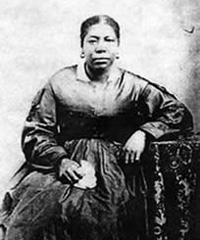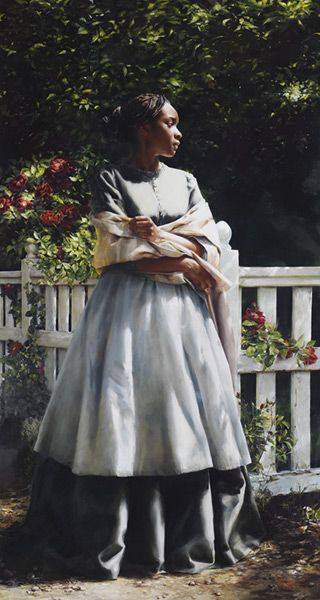Jane Manning James
Jane Elizabeth Manning James was one of the first people of African descent to join The Church of Jesus Christ of Latter-day Saints.
She was born on September 22, 1822, in Fairfield County, Connecticut. She had never lived as a slave but had been a servant in a white farmer’s home. She joined the Presbyterian Church, but when she heard the teachings of two Mormon missionaries she was converted. She was baptized in Connecticut in 1842 and left from Buffalo, New York, with a group of Saints, including eight other members of her family, to join the Saints in Nauvoo. Her family became separated from the group when they were denied passage on a ship. As the others boarded the ship, Jane led her family on a journey on foot of nearly 800 miles to Nauvoo, arriving in late 1843.
- We walked until our shoes were worn out, and our feet became sore and cracked open and bled until you could see the whole print of our feet with blood on the ground. We stopped and united in prayer to the Lord, we asked God the Eternal Father to heal our feet and our prayers were answered and our feet were healed forthwith.[1]
They experienced other frightening events. In Peoria, Illinois, local authorities threatened to put them in jail because they did not have “free papers.” They were finally allowed to go when they were able to convince the men that they had never been slaves and consequently did not need “free papers.” In Nauvoo, they were directed to the Mansion House, the home of Joseph Smith, and Emma welcomed them into her home. After listening to the story of their journey, Joseph told them that they would now be protected. Within a week, Jane’s family found work and was settled in other homes. Jane, however, did not have work or a home. Joseph and Emma invited her to live with them and she found work in their home helping Emma. She stayed for many months.
After Joseph’s death in 1844, Jane lived with Brigham Young’s family until the trek west. She married Isaac James, another free black and member of the Church, and they left Nauvoo with the Saints. She and James had eight children. He left her in 1869, but many years later he returned to her and the church. Jane remained faithful to her testimony of the restored gospel her entire life, through poverty and other adversities. After she died on April 16, 1908, President Joseph F. Smith spoke at her funeral.
In June 1999, the Genesis Group dedicated a monument to her life near her grave in the Salt Lake City Cemetery. In 2005, a 20-minute documentary of her life (Jane Manning James: Your Sister in the Gospel) was shown at the This Is the Place Heritage Park, at the annual FAIR conference, and on PBS.
Elspeth Young was commissioned to create a painting for the Payson Utah Temple. Her resulting portrait of Jane hangs in the temple and is part of Al Young studio’s Pioneers of the American West Fine Art Collection. Young chose to paint James at the time of Joseph Smith’s martyrdom. James considered the Prophet to be “the finest man I ever saw on earth. . . . When he was killed, I liked to a died myself.”[2]

